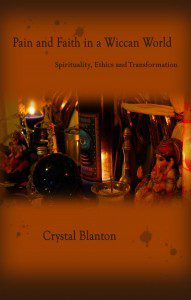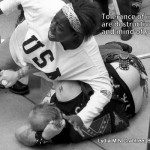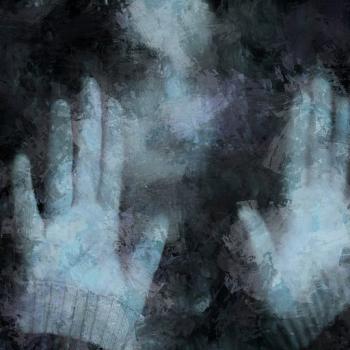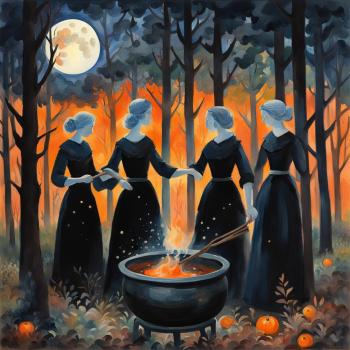 Crystal Blanton is a counselor, a High Priestess, and an activist at the front lines of social justice issues. This makes her uniquely qualified to write a book about the quest for spiritual meaning through our most difficult life events. Pain and Faith in a Wiccan World is that book. Blanton has crafted a timely, intelligent treatise on real-world questions of how our Pagan practices can help us work through our most difficult challenges: senseless death, war, abuse, betrayal. She brings the spiritual seeker down to earth and places faith directly in the context of our daily life with this question:
Crystal Blanton is a counselor, a High Priestess, and an activist at the front lines of social justice issues. This makes her uniquely qualified to write a book about the quest for spiritual meaning through our most difficult life events. Pain and Faith in a Wiccan World is that book. Blanton has crafted a timely, intelligent treatise on real-world questions of how our Pagan practices can help us work through our most difficult challenges: senseless death, war, abuse, betrayal. She brings the spiritual seeker down to earth and places faith directly in the context of our daily life with this question:
When you take away the scripts, candles, altar items and ritual garb, what is left of your spirituality?
Blanton espouses a holistic view of life, one in which our ethics inform our decisions within our magical communities, our work, our families. At a core level, whether we are Christian or Buddhist or Wiccan, our needs are the same: spiritual or religious frameworks that can withstand the trials and tribulations of a fully engaged life and provide nourishment and growth for our souls.
Using as an example her own mother’s tragic accidental death, she explores the numerous manifestations of the processes of pain and loss and how we might grow through them. Interspersed with Blanton’s own writing are chapters by notable Wiccan chaplain Joseph Merlin Nichter and others, providing personal stories of a variety of struggles and how faith helped them to survive.
This book is a tough read at times, for various reasons. Blanton is a scholar and this shows through in her writing, which sometimes suffers from a textbook-ish feel. Stronger editing may have been helpful. It’s also hard to read the different stories of heartache which are included; we can get pushed back into our own experiences of loss and grief. The good news is that, as we are reminded of our own challenges, we are also receiving some really good advice on what to do about them.
At the end of most chapters, there are Tips, Insights, Action and Tools (TIAT) to help the reader put into practice the helpful suggestions given throughout the text. There are instructions on defining the spiritual self with lists of qualities we’d like to cultivate and creating plans for investing time and energy into those. She also encourages owning the places we are not living up to our own expectations and being responsible for our part in creating the difficulties in our lives. Blanton reminds us that anger is an appropriate response to abuse or injustice and also invites us to move beyond the anger to seek balance from which to make positive change. The power of forgiveness is a real type of power and we’re encouraged to seek it.
Attentive to the needs of the body-mind-spirit, Blanton reminds us to seek self-care through massage, good sleep and healthy food, and getting out of our heads and into some physical action, the “next right thing”, whether cleaning the fridge or lighting candles. She also gives instruction on creating sacred emotional space, purposefully making a place for ourselves with all the accoutrements we need and some planned activities to calm and nourish us. On a more psychological side, she teaches us some techniques of reframing our experience to find meaning, using a cognitive-behavioral approach to changing our beliefs about the events of our lives. There is additional instruction on building “distress tolerance” by making space between triggering events and our need to act, with mantras or prayers, counting breaths, or removing ourselves from triggering places.
The reader will find some familiar concepts here. For instance, in one chapter, we find the Kübler-Ross model of the five stages of grief, but with an interesting twist. Blanton has assigned an elemental association to each stage, which gives us new and potent ways of working with these energies. Denial is connected to Air for its implication of separation and distance. Anger is like Fire for its heat and potentially destructive nature. Bargaining is aligned with Water, as we try to manipulate reality through our relationship with deity. Depression and Earth go hand in hand for the weight and opacity of the experience. Finally, we find Acceptance in Spirit, when we’ve allowed ourselves the time and resources needed to come fully into understanding.
While we are encouraged to find the healing we need, we are never hurried. The stages of grief have no set timeframe. We may stay with our emotions as long as we need to, to find closure. Our souls seek balance, just as our physical body does, and our patience will be rewarded eventually.
Blanton proposes the idea that we can capitalize on our life-altering circumstances and use these times of chaos to build the new pattern of our lives. When the old way is broken, we have a rare and wondrous opportunity to create something we may have never considered when things were ‘normal’. We also may find our faith tested by our troubles, and so we are invited to sit with pen and paper and recall times in our lives in which things fell apart completely and what we did and how we prayed and what happened through it. Sometimes, the seeds of beautiful change are planted in adversity. Other times, we can’t see the point in it at all, but must trust that there is some purpose to our difficulties, even if (as Carolyn Myss says in “Spiritual Madness”) the purpose is simply endurance.
As a clinical counselor and social worker, it’s no surprise that Blanton puts a lot of stock in the field of psychology. She reminds us that priests are not therapists or doctors and that there are many resources that we may need to call into play in our healing process. Sometimes the multi-pronged approach is required, especially if there are physical manifestations of our spiritual ills, or our symptoms become pathological. She also reiterates the importance of staying connected to those family (blood- or chosen-) that you trust, to get the reality check you need to keep you moving through your process without getting stuck.
All in all, this is an important and much-needed book. The editing could have been stronger, to make the meaning clearer in places, but there is such a wealth of information here that it’s well worth the read. Elders, Teachers, Counselors, Students, Priests and Practitioners of any denomination will find many gems in these pages.
As Blanton so succinctly reminds us:
The Pagan experience is still a human one.
The Dance of Pagan Recovery is published on alternate Tuesdays. Subscribe via RSS or e-mail!

















